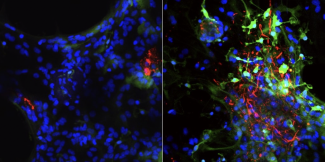Many genetic mutations have been found to be associated with a person’s risk of developing Parkinson’s disease. Yet for most of these variants, the mechanism through which they act remains unclear.
Now a new study in Nature led by a team from the University of Pennsylvania has revealed how two different variations—one that increases disease risk and leads to more severe disease in people who develop Parkinson’s and another that reduces risk—manifest in the body.
The work, led by Dejian Ren, a professor in the School of Arts & Sciences’ Department of Biology, showed that the variation that raises disease risk, which about 17% of people possess, causes a reduction in function of an ion channel in cellular organelles called lysosomes, also known as cells’ waste removal and recycling centers. Meanwhile, a different variation that reduces Parkinson’s disease risk by about 20% and is present in 7% of the general population enhances the activity of the same ion channel.

